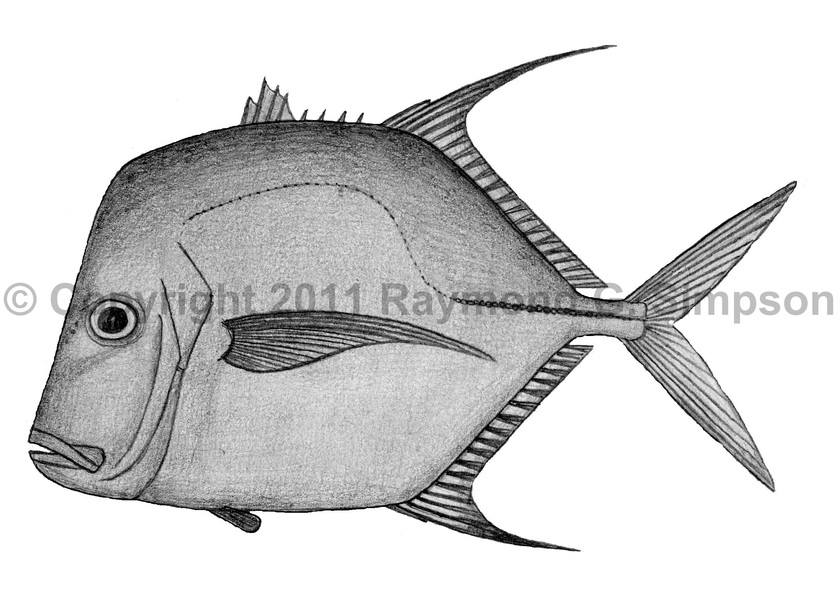
Common Name
Lookdown
Year Described
Linnaeus, 1758
Identification
Dorsal Fin: 8 spines, followed by I, 20-23
Anal Fin: 2 spines (absorbed in larger fish), followed by I, 17-20
Pelvic Fin: I, 5
Gill Rakers: 6-9 upper, 23-27 lower; 31-35 total
Vertebrae: 10 precaudal, 14 caudal
Body short, extremely deep, and very compressed in cross-section, with a very steep head profile. Mouth subterminal at bottom of head. Eye small (5.5-6.0 times in HL). Mouth ends before anterior margin of eye. Teeth minute. Second dorsal and anal fins with strong anterior lobes. Pelvic fin tiny. Pectoral fin falcate and rather large. Lateral line strongly arched anteriorly, with a posterior straight portion with 7-12 weak scutes over caudal peduncle. Body appears and feels naked; scales are tiny and embedded in skin.
Juveniles have greatly elongated filaments on the first dorsal fin (first 4 spines), pelvic fin, and the second dorsal lobe. These filaments become shorter with age and size until they disappear in larger fish (illustrated).
Color
Body is brilliant silvery to golden, often with blue sheen. Fins usually body colored, but caudal fin is often yellowish and dorsal fin lobe is dusky. Juveniles have black fin filaments, a distinct eye bar, and often display faint body bars.
Size
Common to 24cm. Maximum size to 40cm.
Habitat
Occurs in coastal waters over hard and soft bottoms, often in small schools. Often caught around structures and artificial reefs.
Range
Maine to Uruguay. Rare around the Caribbean islands.
References
Smith-Vaniz, W.F. 2003. Carangidae (pp 1426-1468). In: Carpenter. 2003. The living marine resources of the Western Central Atlantic v. 3.